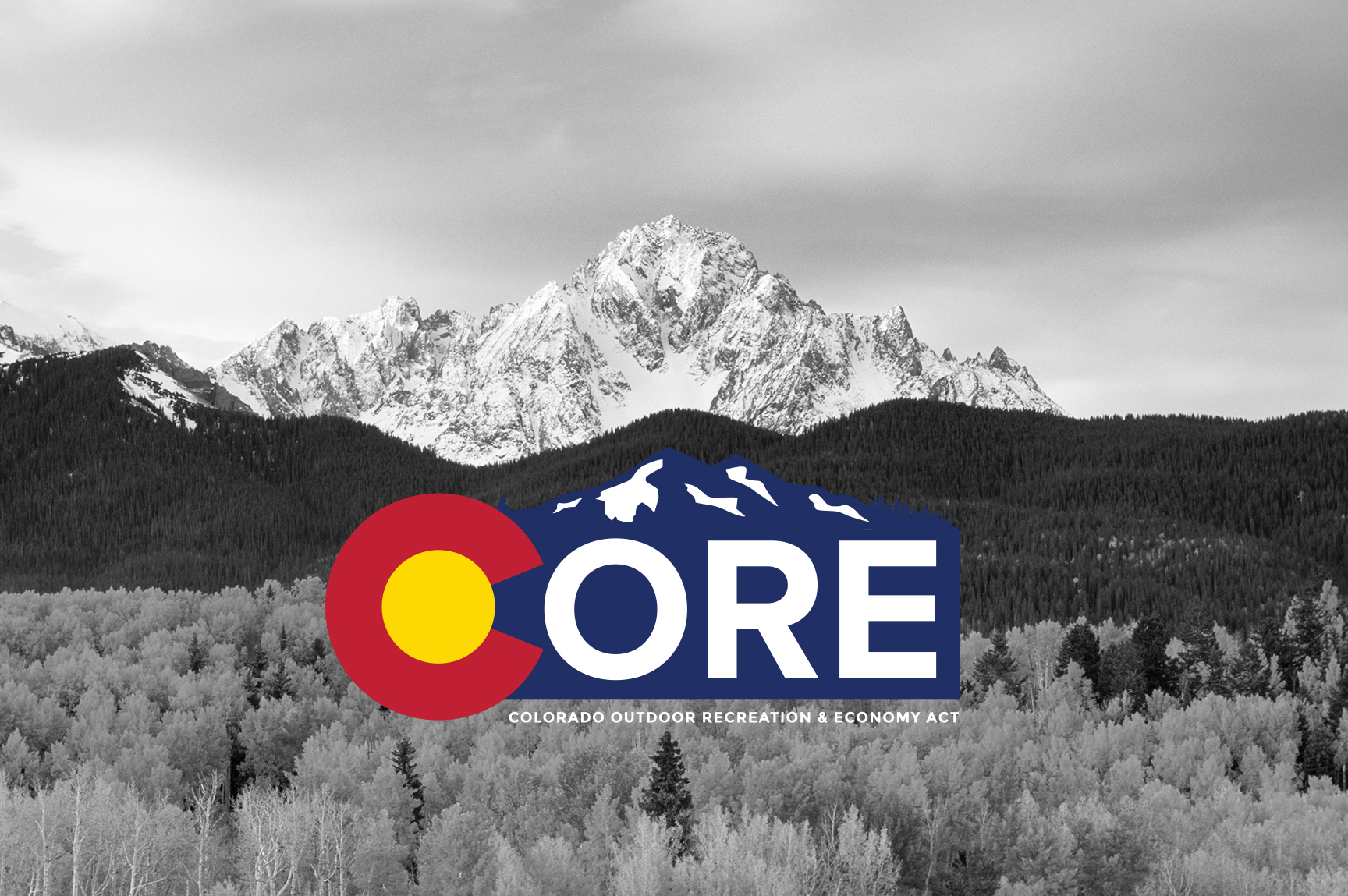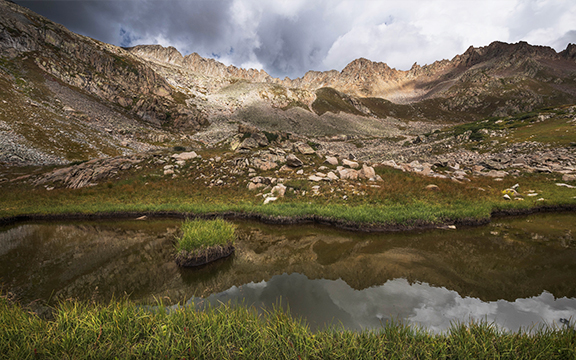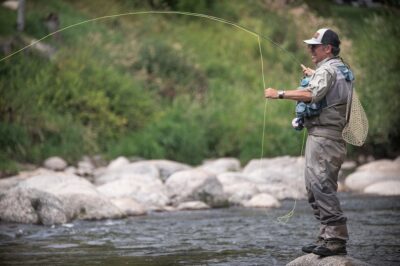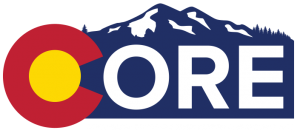
Photo Credit: Jon Mullen, courtesy of The Wilderness Society
The Colorado Outdoor Recreation & Economy (CORE) Act is the most significant and broadly-supported effort to protect Colorado’s most cherished lands, waters, and forests in a generation. The legislation would protect hundreds of thousands of acres of public lands in Colorado, ensuring that future generations can always enjoy our state’s mountains, rivers, and wildlife.
For decades, local communities have been calling for the protection of historic sites, recreation areas, unspoiled wilderness lands, as well as waterways and wildlife habitat through individual pieces of legislation that have now been united and refined in the CORE Act. The bill would protect four important areas:

Photo Credit: Mason Cummings, The Wilderness Society
SAN JUAN MOUNTAINS
The CORE Act protects iconic and spectacular landscapes in the San Juan Mountains. The bill expands wilderness designations for more than 31,000 acres of wilderness, including some of the state’s most recognizable mountain scenes encompassing two fourteeners: Mount Sneffels and Wilson Peak.
It also safeguards beloved high country destinations, like Ice Lake Basin, from future mining in the more than 21,000-acre Sheep Mountain Special Management Area, as well as protecting more than 6,500 acres of the Naturita Canyon watershed from energy development.

Photo Credit: John Mullen, The Wilderness Society
CONTINENTAL DIVIDE
The CORE Act will provide and enhance the unique educational and recreational opportunities in central Colorado’s White River National Forest, the nation’s most-visited national forest. Along the Continental Divide, it creates three new Wilderness areas in the Tenmile Range, Hoosier Ridge, and Williams Fork Mountains, totaling more than 21,000 acres of protections.
Additionally, it adds 20,196 acres to three existing Wilderness areas by expanding Eagles Nest, Ptarmigan Peak, and Holy Cross Wilderness areas. It creates two new wildlife conservation areas, totaling more than 11,600, including Greater Sage Grouse habitat and the only high-elevation land bridge over I-70 and the Eisenhower Tunnel.
THOMPSON DIVIDE
The CORE Act would protect more than 225,000 acres on the Western Slope from the impacts of new oil and gas leasing. For over a decade local governments, ranchers, recreationists, and business owners have worked toward this permanent mineral withdrawal. The Thompson Divide provides critical public land grazing allotments, outstanding opportunities for hunting, fishing, and a myriad of other motorized and non-motorized recreational activities. It embodies the rural and wild character of western Colorado and encompasses more than a dozen inventoried roadless areas – one of the densest concentrations in the region.
Given its importance to the local economy, protecting this swath of backcountry has united local communities like no other issue. Independent economic analysis conducted by Denver-based BBC Research found that hunting, fishing, grazing, and recreation activities in the Thompson Divide supports nearly 300 jobs and produce $30 million a year in economic value.

Photo Credit: Ecoflight

Photo Credit: Mason Cummings, The Wilderness Society
CURECANTI NATIONAL RECREATION AREA
The CORE Act would establish the boundary around the 43,000-acre Curecanti National Recreation Area, formally making it an official unit of the National Park System. The area was established in 1965, but has never been designated by Congress. The legislation would do that, strengthening protection of natural and cultural resources in the area.
This boundary adjustment is the result of a years-long extensive public planning process and allows the National Park Service to work with landowners to enhance the long-term conservation of natural, recreational, and scenic resources within the unit. Its inclusion in the CORE Act is also a response to the nearly one-million visitors who travel to the area to fish, hike, and otherwise recreate and to the local gateway economies that depend upon this visitation.
Colorado’s Outdoor Recreation Economy
Colorado’s modern outdoor recreation economy was started by the very veterans who trained at Camp Hale during World War II. In October 2022, President Biden honored those veterans by designating the Camp Hale-Continental Divide National Monument, designating an area long proposed for protection under the CORE Act. Today, our spectacular public lands are vital to the state’s outdoor recreation economy. In 2017, outdoor recreation contributed $62 billion to Colorado’s economy and $35 billion to the state’s Gross Domestic Product (which is more than 10 percent!) while supporting 511,000 direct jobs, according to Colorado Parks and Wildlife. Additionally, the outdoor economy contributes $2 billion in state and local taxes annually, according to the Outdoor Industry Association.
Protecting Clean Water, Wildlife, and Our Way of Life
 The lands and waters within the CORE Act are home to alpine lakes, key watersheds, and incredible rivers and streams. Local communities and cities depend on these landscapes for clean drinking water, healthy fishing streams, and outdoor recreation activities. Generations of ranchers have grazed their cattle in the Thompson Divide and depend upon protected public lands for health and long-term wellbeing of their herds.
The lands and waters within the CORE Act are home to alpine lakes, key watersheds, and incredible rivers and streams. Local communities and cities depend on these landscapes for clean drinking water, healthy fishing streams, and outdoor recreation activities. Generations of ranchers have grazed their cattle in the Thompson Divide and depend upon protected public lands for health and long-term wellbeing of their herds.
The Continental and Thompson Divides, the San Juan Mountains, and the Curecanti National Recreation Area all hold ecologically important, mid-elevation areas that provide vital wildlife habitat and migration routes for elk, mule deer, bighorn sheep, mountain goat, moose, black bear, lynx, wild turkey, and the rare wolverine. Safeguarding these lands will preserve sportsmen’s time-tested backcountry traditions to hunt and fish in their own backyard.
Public opinion research has found that Coloradans value protected public lands. According to the bipartisan Conservation in the West poll, 90 percent of voters think outdoor recreation is important to our state’s future economy. Additionally, 73 percent of Coloradans say the ability to live near, adventure, and enjoy public lands like national forests, parks, or trails was a significant reason they live in the West.Goes Here

The CORE Act is a result of decades of collaboration between diverse stakeholders, including ranchers, sportsmen, small business owners, veterans, local elected officials, outdoor recreation organizations, and water and energy groups.
Each of the places included in the CORE Act had been part of other proposals and collaborative efforts supported by local communities. When you look at these efforts as one, this may be the broadest support for legislation to protect public lands in Colorado ever seen.